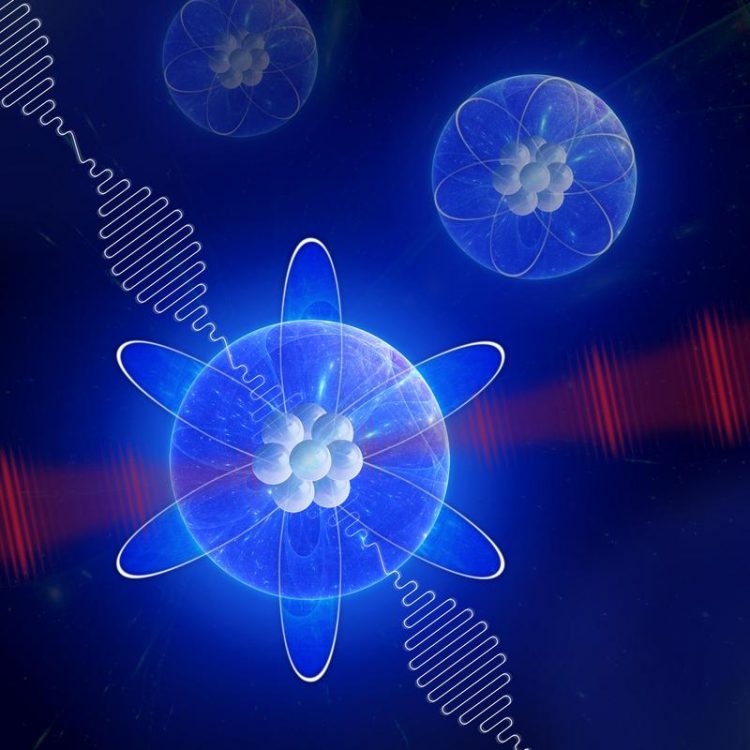Interplay of light and matter – A “perfect” attosecond experiment

Detection of the shape of an electronic wave function with a six-fold symmetry NRC Ottawa
An attosecond is one quintillionth of a second, roughly equivalent to the relationship between one second and the age of the universe. Attosecond light pulses can profoundly change the states of matter.
By using attosecond light pulses, electrons can be excited to a higher energy level (a higher orbital), which is characterized by a series of quantum numbers that describe the energy of the excited electron, the rotation of the electron around the core of the atom and its spin. If the energy that is transferred from the attosecond pulse to the atom is high enough, the electron can even ionize – which means that it leaves the atom and flies off, for example towards a detector.
In the new attosecond experiment, the scientists managed to completely measure all quantum numbers of the released electron – or indeed, the wave function of a released electron – which is why the experiment may be called a “perfect” attosecond experiment.
“Attosecond research is still in its infancy,” says Professor Dr Marc Vrakking, MBI Director and co-author of the publication. “It’s only because of very recent developments in laser technology that experiments of this kind have become possible. Attosecond experiments allow us to comprehensively measure the changes that the absorption of light bring about in matter. Our results make an important contribution to fundamental research in quantum physics.”
Electrons are elementary particles that make electricity possible. Ionization, for example, is the basis for the operation of solar cells. Sun light releases electrons in silicon, generates a current flow. The current experiment used laser pulses to release electrons from atoms, and to measure and describe how this changed the state of the atom and the electron. Lasers are also essential tools for storing and transmitting information in measurement technology, in medical diagnostics and in modern production technology, from shipbuilding and aircraft construction to computer chips.
Publication:
Coherent imaging of an attosecond electron wave packet
D. M. Villeneuve, Paul Hockett, M. J. J. Vrakking, Hiromichi Niikura
Science. 2017, Vol. 356, Issue 6343, doi: http://science.sciencemag.org/cgi/doi/10.1126/science.aam8393 (link will be live at the embargo time)
Please find attached images and a summary of the research results.
Contact:
Max Born Institute for Nonlinear Optics and Short Pulse Spectroscopy
Professor Dr Marc Vrakking
Tel. +49 (0)30-6392-1200
E-mail marc.vrakking@mbi-berlin.de
http://science.sciencemag.org/cgi/doi/10.1126/science.aam8393
Media Contact
More Information:
http://www.fv-berlin.deAll latest news from the category: Physics and Astronomy
This area deals with the fundamental laws and building blocks of nature and how they interact, the properties and the behavior of matter, and research into space and time and their structures.
innovations-report provides in-depth reports and articles on subjects such as astrophysics, laser technologies, nuclear, quantum, particle and solid-state physics, nanotechnologies, planetary research and findings (Mars, Venus) and developments related to the Hubble Telescope.
Newest articles

An Endless Loop: How Some Bacteria Evolve Along With the Seasons
The longest natural metagenome time series ever collected, with microbes, reveals a startling evolutionary pattern on repeat. A Microbial “Groundhog Year” in Lake Mendota Like Bill Murray in the movie…

Witness Groundbreaking Research on Achilles Tendon Recovery
Achilles tendon injuries are common but challenging to monitor during recovery due to the limitations of current imaging techniques. Researchers, led by Associate Professor Zeng Nan from the International Graduate…

Why Prevention Is Better Than Cure—A Novel Approach to Infectious Disease Outbreaks
Researchers have come up with a new way to identify more infectious variants of viruses or bacteria that start spreading in humans – including those causing flu, COVID, whooping cough…



